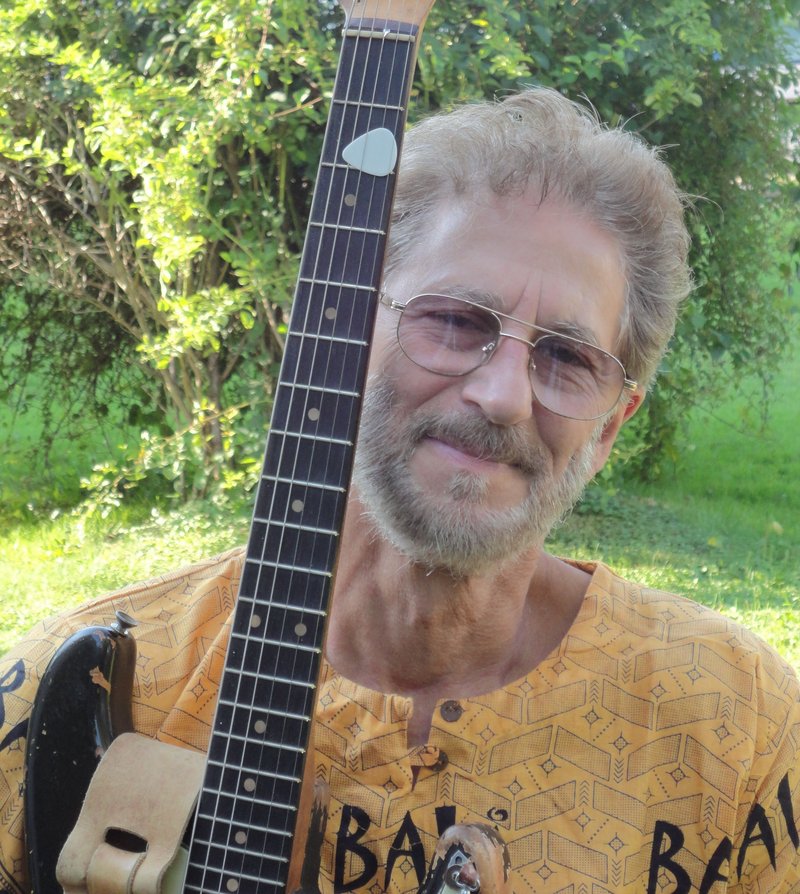Philip Carlo Paratore grew up in the Bronx but has lived in Maine for more than 30 years. At present, he’s an adjunct professor in the arts and humanities department at the University of Southern Maine. He’s also an artist, with painting as his chosen medium.
Paratore’s other passion is music, and he’s been playing guitar and writing songs for many years. He recently finished the CD “Bronx to Bali,” a six-year project that spans Latin, blues, rock, jazz, Middle Eastern and Indonesian music.
GO wondered about Paratore’s diverse interests in musical styles and the parallels between art and music. Paratore was happy to respond.
When did you first pick up a guitar?
I was given my first guitar at age 10. I started guitar lessons, but stopped after three lessons due to financial issues and a very boring instructor. My Uncle Carlo showed me a few chords, but after that, I was on my own.
What did you grow up listening to for music?
The music I listened to in my early years in the Bronx was varied: Top 40, rock ‘n’ roll, classical and traditional Italian. At the age of 18, I was introduced to blues. It greatly appealed to me because of its simplicity, forceful rhythms and emotional intensity. As years passed, I became more and more interested in jazz, Latin and the music of other cultures.
When and how did you first become interested in music from the Middle East and Indonesia?
My travels in East Africa, China and, most recently, Indonesia, have all influenced the way I think about and create music. Gamelan ensembles of central Java excited my interest in melody in a new way, particularly in their use of pentatonic scales. In Bali, music, like art, is a way of life. The rhythms and minor scales of African and Middle Eastern music also intrigued me, and seemed distantly related to American blues.
It has been an exciting challenge to put together elements of these different genres in a contemporary musical form using the electric guitar (a ’60s Fender Stratocaster). As I recall, events in the Middle East were on my mind when I played the guitar solo for “Reality Show.”
Are there any similarities in the creative process of creating music and creating art?
There are many fascinating connections between art and music. In the first creative stage of painting, one begins with an idea. This idea is usually emotionally charged, and energizes the process of experimentation and development. It is much the same in music. One begins with an idea, which is the spark that gets things rolling. Of course, coming up with an idea is not always easy.
The second stage in this creative process involves decisions about structure, organization and design. In fact, many of the same terms are used in painting and music: Harmony, contrast, counter-point, balance, pattern/rhythm, texture, etc.
Personally, I strive for a balance or interplay between parts that are structured and planned, and other parts which are spontaneous and improvised. In both painting and playing music, I try to leave room for surprises. Actually, I am most pleased and excited when I am surprised by my own music; a melody, transition, phrase or solo line that appears spontaneously, out of the blue.
There are also significant differences between painting and playing music. Painting is done alone; playing and recording music is done with others. I was very fortunate to have three excellent coworkers while creating “Bronx to Bali”: My patient and creative recording engineer, Jon Ellis Stevens; Andy Rudy, an all-around brilliant musician; and my talented and inspiring wife, Pritta, whose voice can be heard on “Amazing Growth,” “Kembali,” “Asante,” “Sangria” and “Bronx to Bali.”
Where can people pick up a copy of “Bronx to Bali”?
At this time, “Bronx to Bali” can be purchased at Bull Moose Music in Portland or by email via PhilipCarlo@gwi.net.
Staff Writer Aimsel Ponti can be contacted at 791-6455 or at:
aponti@pressherald.com
Send questions/comments to the editors.




Success. Please wait for the page to reload. If the page does not reload within 5 seconds, please refresh the page.
Enter your email and password to access comments.
Hi, to comment on stories you must . This profile is in addition to your subscription and website login.
Already have a commenting profile? .
Invalid username/password.
Please check your email to confirm and complete your registration.
Only subscribers are eligible to post comments. Please subscribe or login first for digital access. Here’s why.
Use the form below to reset your password. When you've submitted your account email, we will send an email with a reset code.